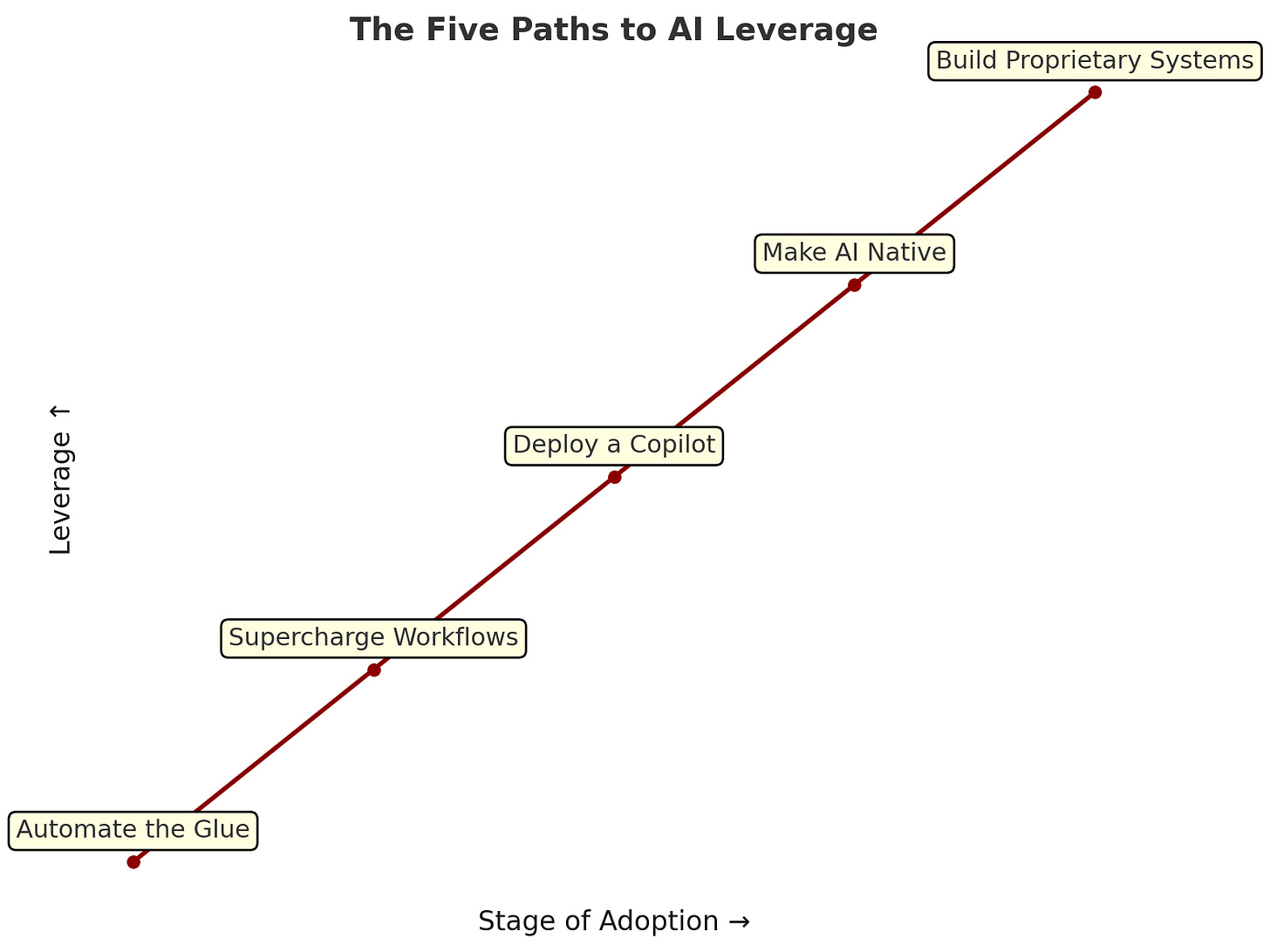The Future of GTM Isn’t Bigger. It’s Smaller.
Why small, AI-native teams outsell giants — and the five paths you can take to join them.
AI has changed the rules of go-to-market.
For decades, growth was about scale. You built armies of SDRs, writers, reps, and ops people. More bodies meant more emails, more calls, more pipeline.
Every founder remembers the pain of hiring 10 SDRs only to realize they didn’t move the needle. That playbook is dead.
But today, leverage beats labor. A five-person team running sharp positioning, signal-driven workflows, and AI-native systems can outperform a thirty-person org still stuck in yesterday’s playbooks.
It’s not a fair fight.
And it’s not supposed to be.
Scale Used to Mean Size.
Now It Means Leverage.
Look closely at the best GTM teams right now. They don’t look noisy. They look quiet. Focused. Small.
But behind the scenes, they’re running faster systems that:
Detect buyer intent before a form ever gets filled.
Personalize outreach in seconds.
Focus on the 10 accounts that matter, instead of spraying 1,000.
Sync sales, marketing, and product in real time — with no handoffs.
They don’t need more people.
They need more signal.
The companies that win aren’t those with the most headcount.
They’re the ones who compound the value of every person they hire.
The Five Paths to AI Leverage
AI is no longer an experiment. It’s the operating system of GTM. But the way teams adopt it varies. Think of five practical paths you can take, depending on your stage and ambition:
1. Automate the Glue
Start simple. Offload repetitive, low-value work like lead research, data entry, or follow-ups. These are the tasks that eat hours but don’t require judgment.
Impact: You reclaim time instantly, without restructuring your team.
2. Supercharge Existing Workflows
Instead of reinventing your process, layer intelligence on top of what already works — weekly pipeline reviews, onboarding sequences, renewal check-ins. AI makes them run faster, smoother, and with fewer manual cycles.
One 3-person sales team we tracked runs weekly pipeline reviews with an AI agent. Instead of spending an hour manually updating the CRM, the agent prepares a clean summary in a fraction of the time — cutting prep from an hour down to just a few minutes — so the team spends their meeting on strategy, not status updates.
Impact: Your team spends less time maintaining the machine and more time moving deals forward.
3. Deploy Your Own Copilot
As complexity grows, you’ll need systems that think with you. A custom copilot can summarize investor updates, draft memos, or surface account risks — all while living inside your Slack, Notion, or CRM.
One founder built a custom Slack copilot that drafts investor updates every Friday. What used to take three hours of writing now takes thirty minutes — freeing them to focus on product and customers.
Impact: Chaos becomes structured. Knowledge stops living only in someone’s head.
The first three paths are where most teams start. But the biggest leverage — and the hardest-to-copy moats — come next.
Keep reading with a 7-day free trial
Subscribe to GTM Vault with Rick to keep reading this post and get 7 days of free access to the full post archives.




